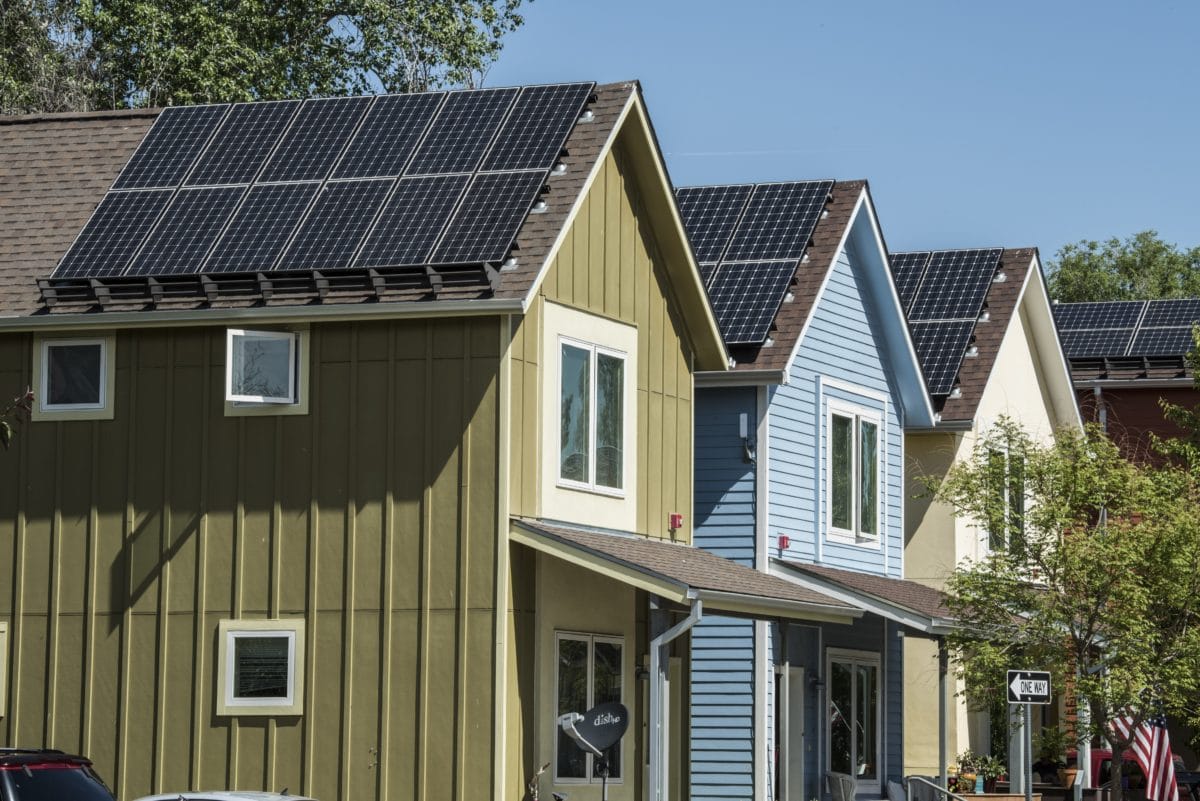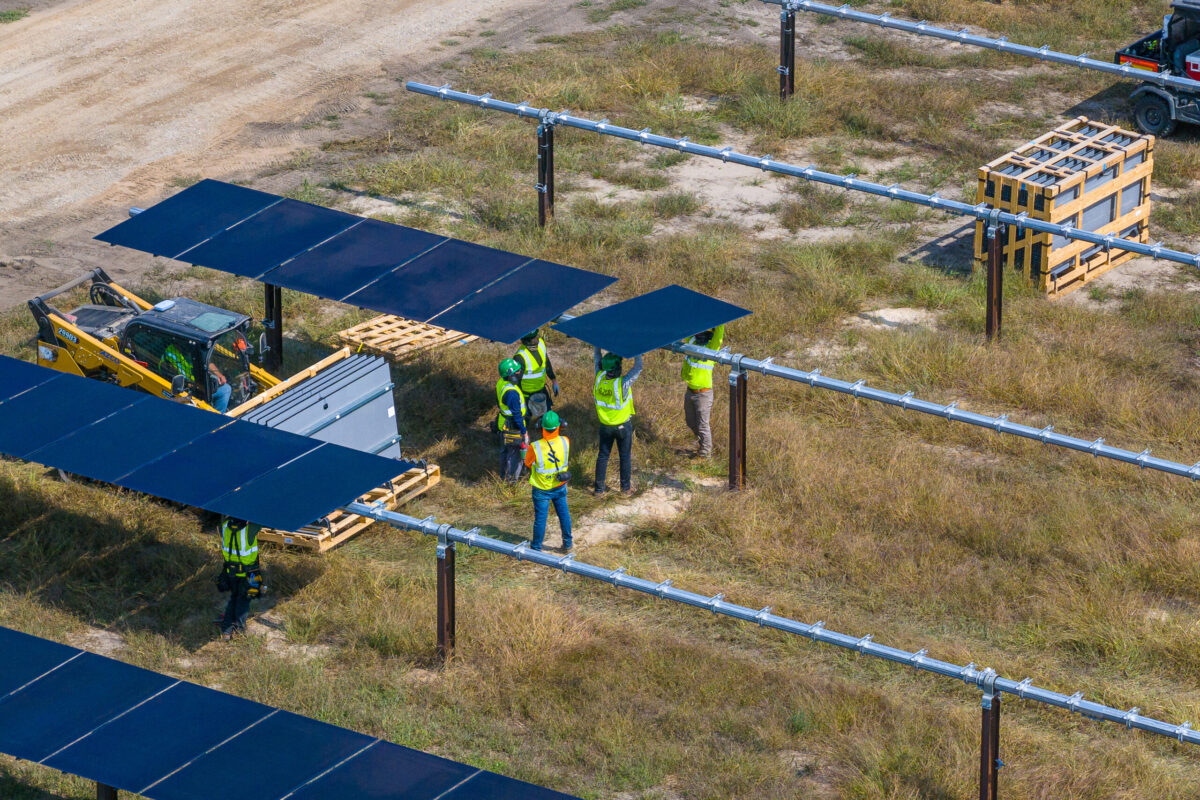A number of people have asked me why I changed my mind about net metering solar, either directly or indirectly. So here is the answer.
Let me begin by saying I have not done a 180-degree turn, as some have said. I have simply updated my views in light of the new evidence that has become visible since I got involved with NEM in 2014.
I recognize there is a cost shift and NEM should be reformed, particularly in states like California where more than a million customers, representing more than 10% of customers, have installed solar panels on their roof.

Image: Twitter
But imposing a grid access charge is a terrible idea. I also believe that export compensation should be lowered from retail rates but not suddenly and certainly not retroactively.
I also believe that states where solar deployment is in the early stages, and where less than 5% of customers have deployed solar roofs are at a very different stage of the game and should stick with NEM in its current form.
Bayesian insights
In grad school at UC Davis, I came across the concept of “Bayesian Updating” in an econometrics class. I had heard of the Bayes Theorem in my undergraduate class in econometric at Karachi University, but did not appreciate the concept. It sounded like an interesting theorem with no immediate applications. It was one of the many theorems from grad school that I forgot in the decades that followed.
I did not encounter it in my empirical work on price elasticities, demand forecasting, and so on. It seemed so subjective.
In 2019 the Reverend Bayes appeared to me. It was late one evening in July when I flew into Phoenix from Chicago to attend a meeting the next day on rate design (yes, to discuss three-part rates, inclusive of demand charges). I was having some troubling symptoms when I woke up. To make a long story short, I was rushed to ER by the hotel staff who spoke to me and concluded that medical assistance was needed.
At the hospital, they kept doing every medical test and scan on me until the midnight hour arrived and I fell asleep. When I woke up, seven men in white robes were looking at me from just a few feet away. They were arrayed in a triangle and for one brief moment I thought they were angels.
The man in the front smiled and said he was the head of the department of neurology and the others were his students.
He said he was pleased to meet an economist. I asked if he was one. He said he had taken a few classes as an undergrad. Then he said something that no doctor had ever said to me: “All doctors are Bayesian.” We diagnose the patient based on the test results but update it based on how the patient’s condition evolves.
You are perfectly fine and can go home but please follow up with your local neurologist. Which I did. Diagnosis: migraine.
Testimony
In 2014, a utility in the southwest hired me to review their NEM reform proposal and to comment on it. I wrote a brief report, which was then filed with the utility’s regulator, its elected board of directors. In 2015, I testified in that utility’s rate case related to NEM. I appeared at least three times before the Board to defend the utility’s proposal to place all NEM customers on mandatory three-part rates, retroactively. The proposal was approved but not unanimously and without grandfathering.
As the years passed, I testified on NEM in Nevada, Idaho, Kansas (thrice) and Montana on behalf of the investor-owned utilities in those state. In most cases, mandatory three-part rates for NEM customers were rejected right away. Once, they were approved only to be remanded by the state supreme court to the commission. In another instance, customers were given a choice to be on a simple TOU rate or a three-part rate.
Along the way, I became the symbol of the anti-NEM movement in many circles. Even when I was not testifying on NEM and testifying more broadly on rate design reform, it would come up during cross examination. This happened more than once.
One of my clients in the southeast asked me if I ever hesitated to turn the keys in my car. I was taken aback and asked, Should I? He said you might want to see the Robert De Niro film, Casino. It was meant, of course, as a joke.
In another rate case, I asked an attorney who had cross examined me a while back in the formative 2015 NEM rate case why were there so many SWAT police in the very large and packed hearing room. He said, “Ahmad, they were there for your protection.”
Questioning assumptions
By now, I had begun keeping notes, not on the SWAT police being in the hearing room or the action in the Casino movie. None of that bothered me. (I write extensively on the mistakes the Pakistani military has made in its wars with India, in the way it defines national security narrowly to just focus on the military dimension, and the harm it has caused the economy by excessive defense spending).
I had found a flaw in my reasoning. It rested on the presumption that through NEM the “poor subsidized the rich.” It overlooked the fact that the poor was being heavily subsidized by the rich not only the tax code and charitable donations but explicitly through bill discounts, such as the 35% CARE discount in California.
Thus, other than me and a few other witnesses making those cost shift arguments ad nauseum, no one else was making those arguments. We were not gaining a big following. In fact, we had no following at all to speak of. On top of that, I was being reviled in every local newspaper where I testified, even if it was just on simple TOU rates.
There were no public rallies opposing NEM. There were no editorials opposing NEM. The low-income customers never came to the workshops organized by the commissions prior to the hearings.
I began to talk to friends, neighbors and relatives about NEM at parties and other social events, much to their annoyance, I am sure. Not a single person supported the poor subsidizing the rich argument. In fact, I never ran into a person, rich or poor, who was opposed to installing solar panels.
I began to question my assumptions. I found myself standing on the wrong side of history. Bayesian updating kicked in.
Slowly, the truth dawned on me. There were a whole bunch of cost shifts in rate design. Why just focus on this one? Was that not bias? Yes, it was. It was only looking at a portion of the truth, not the whole truth. That was my epiphany!
I got an opportunity to express my reformed views in the last testimony I gave on NEM which took place in South Carolina.
Subsequently, I studied the NEM reform proposals that were presented before the California PUC on March 15, 2021 and co-authored a paper on the topic with several others, including Canadian experts.
The turning point came on December 13, when the CPUC issued a proposed decision (PD) on NEM 3.0. It adopted the most anti-solar views that had presented by certain parties at the March 15 workshop and the subsequent hearings. It would have virtually eliminated the consumer’s incentive to install solar panels. I felt the time had arrived for me to speak directly on the subject even though I was retiring at year end.
Reformed view
In January 2022, reflecting my reformed views, I filed comments to the CPUC on the PD, first individually and then collectively with nine other experts. I kept on tweeting my criticisms of the PD and was invited to join a moderated conversation with Professor Severin Borenstein by Canary Media.
Notably, in the same month, Governor Schwarzenegger published an op-ed in the New York Times in which he lambasted the PD. And the Reverend Ambrose Carroll Sr. published an op-ed in the Mercury News dispelling the myth that low-income customers were opposed to the installation of solar panels. In fact, he wrote, they wanted to install solar panels on their homes and the PD would harm them.
In February 2022 there came the news from Canada that the premier of Nova Scotia had intervened to stop the electric utility from imposing a grid access charge of $8/kW/month on solar customers. The utility dropped the proposal.
I also wrote three editorials on the subject, one by myself, another with Jon Wellinghoff, a former chairman of the FERC, and a third with Dr’s Richard McCann and Perry Sioshansi.
Recently, I have come to know that Governor Jerry Brown has installed solar panels and paired them with batteries at his house.
I am confident my reformed vision is in line with reality. Consumers, rich and poor, want to install solar panels. They enhance affordability and green energy. When paired with batteries, they enhance local resilience. They lower investments in the distribution and transmission system.
They are a gateway to the future, especially in a state like California with strong net zero energy goals. To the extent that low-income consumers have a difficult time affording them, we need to work on ways to enhance their affordability. Not impose a grid access charge that will make solar panels unaffordable to all but the wealthy.
Let me end by quoting Victor Hugo. “No one, not even all the armies of the world, can stop an idea whose time has come.”
The views and opinions expressed in this article are the author’s own, and do not necessarily reflect those held by pv magazine.
This content is protected by copyright and may not be reused. If you want to cooperate with us and would like to reuse some of our content, please contact: editors@pv-magazine.com.








As long as demand for electricity is increasing (and the change from gasoline to EV assures that it will), full Net Energy Metering doesn’t cost the ratepayer anything. In fact it saves them money because the utility won’t be building as much new generating capacity. All costs of transmission lines are fully covered because the excess energy generated by a home with solar panels is resold by the utility to a neighboring house. Public Service Commissions ought to be resisting weakening Net Energy Metering and demanding that utilities encourage the use of batteries as a Virtual Power Plant–one that doesn’t enter the rate base because it was privately funded.
There are costs to be connected to the grid, including maintaining and replacing transformers, wiring, replacing damaged equipment from fires or storms. The question is how to pay for them. One can charge based on a fixed cost, power import or export, or on variable electricity usage. If there was 100% owned solar, there would be virtually no place to export solar. But, without batteries, power would need to be delivered at night. Charging for the grid based on power used would be very expensive. With batteries, a residence may only need external power a few times per year, but the grid and generating equipment is still needed. If that generation is natural gas, who maintains the wells and pipelines for a few times it’s needed per year?
These aren’t easy problems to solve, and solutions may be different for varying percentages of green power. There are solutions which are optimized for individual generators, and those optimized for traditional generators, and those optimized for total societal cost. Rooftop solar is expensive compared with bulk solar fields, but the latter is ugly and may or may not be compatible with existing land use.
I don’t think it takes a PhD in Economy to „slowly have truth dawn on you“ and realize that you are on the wrong side of history. Thanks for all your efforts to slow down progress.
I Am sorry but i have to disagree Brad. I pay 35 dollars a month for the privelage of giving my. Excess power production to florida powrr and light. Florida has no pay back provixion for the energy i produce just crrdit which drops after one yeat.
I’m a net metering customer for 12 yrs in Florida. Seems to me that all residential customers connected to the utilities grid should equally share the expense of deploying and maintaing the grid. These charges can be divided among all residential customers and charged as part of the base fee. I’m all for paying my fair share.
Pay our fair shar I 100% agree. Let it come out of executives all time highest bonuses as well as customers. Not pack the burden on homeowners only. Electric companies need to pay their portion as well coming out of their record breaking profits. Florida and California are similar in the sense of IOU’s. Monopolies in a free market society is extortion, not capitalism.
This is put forward by the utility companies. It encourages inefficiency and greed. Way too generous retirement benefits, many exceeding what they were paid before they retired. If the shareholders had to assume the costs of gross inefficiency, the planning would change drastically. There is no benefit to become more efficient if the ratepayers, those with solar and without, rich and poor pay all the costs. Look how much less electricity costs for municipal vs investor owned utilities. This is one of the times I would disagree with private industry vs public.
well said. Going solar is a smart choice for anyone who is looking to reduce their carbon footprint, save money on their electricity bills, and do their part to help protect the environment. With the increasing concern about climate change and the need for clean and renewable energy sources, now is the time to consider making the switch to solar energy.
Mr. Faruqui’s friends, neighbors and relatives don’t seem likely to be the poor he feels are subsidized by the tax code and charitable donations. This is a privileged , uninformed and naïve view. The poor don’t get to take deductions like the well-off. The poor have to be served by a charity to benefit/be subsidized by charitable donations.
The poor pay a higher percentage of their income than the well-off. They have less discretionary income than the well-off. Of course they’d like to install solar, but they don’t have the money to do so.
If you can afford to install solar, you are likely to be able to be reimbursed less for your excess solar energy production. Do most of us install solar in order to produce more energy than we need so we can sell it back to the utility? A good solar proposal assesses the energy needs of a home and installs enough panels to cover the use, not to produce excess energy.
Mr. Faruqui’s epiphany may be the result of migraines, not informed thinking.
Some cities are requiring apartments to put solar on top for the poor. If you get a apartment in one of these new buildings, you get free electricity. But with the very terrible long payback of NEM 3.0, all this projects have been canceled. Solar no longer makes sense in California for most people and even for poor people in apartment buildings. We were heading for a period of time where most of the buildings would have solar and electricity would be very cheap during the day for charging electric cars, etc. But with nem 3.0 which does not pay you much for solar, all that went into the trash can. The new proposal where you pay $10 a month connection fee if you’re poor and 200 bucks a month if you’re rich is a way to subsidize the poor’s electricity. There would also be some per kilowatt hour fee added. But even that proposal will mean less solar will be installed.